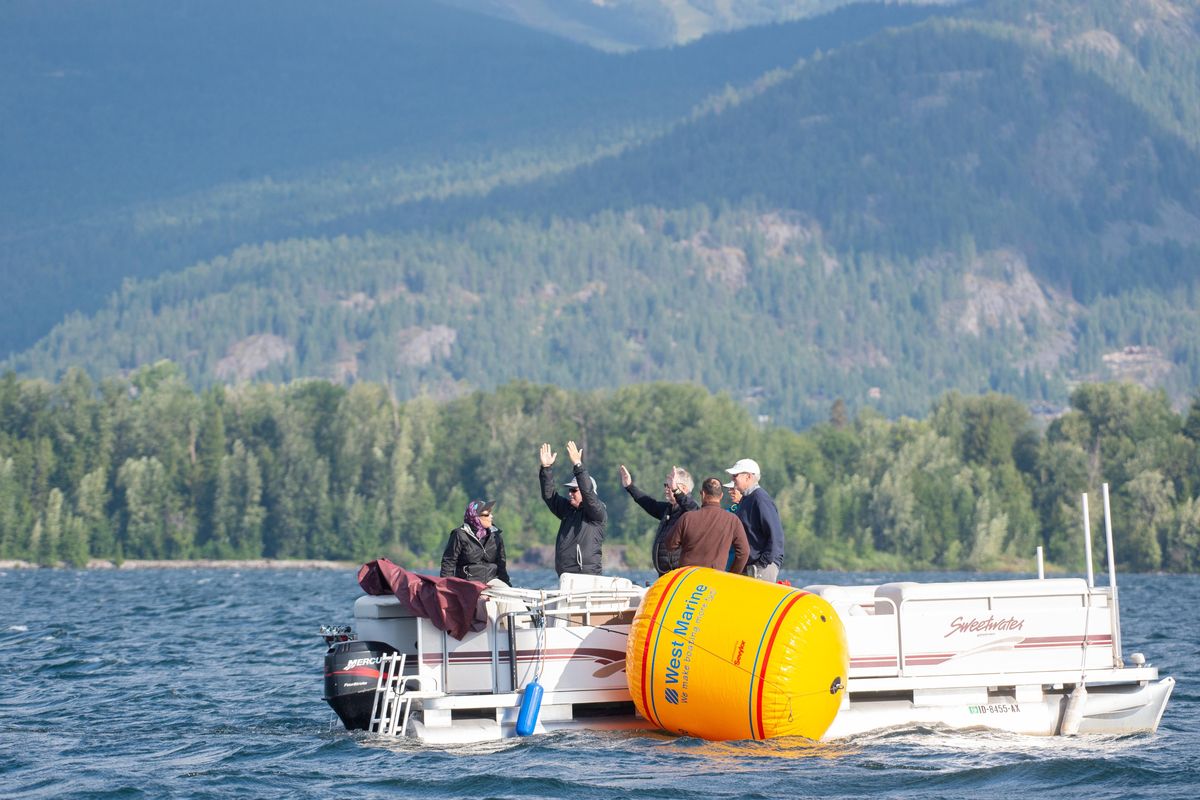Sailboats take to the shores of Lake Pend Oreille for 74th annual Thistle Nationals

SANDPOINT – On a windy, cool Monday morning that was not predicted to be so, 66 sailboats raced not far from the shores of Lake Pend Oreille as part of an event never before held in Sandpoint.
The forecast a couple of days before called for 90 degrees with wind at 2 or 3 knots, hardly ideal for sailboats.
But the change in weather was an obvious delight.
“I think in any mountainous region, it’s really hard to predict what’s gonna happen,” said Mike Ingham, who wasn’t competing at the Thistle Nationals last week but has won it in the past. “We make a study of the weather wherever we go, and I don’t think there’s a lot here. You gotta be heads up.”
Monday’s two races kicked off a week’s worth of races at the 74th annual event, which drew crews and boats from across the country.
“It was a delightful day,” Joy Martin said Monday. “It is a beautiful venue. So much fun.”
Martin is the secretary and treasurer for the Thistle Class Association, which has nearly 800 members registered across the United States.
She had never been to Sandpoint before, but when she heard the Sandpoint Sailing Association was willing to host the regatta, Martin promised to come early and help out. So she did.

Thistles are a one-design sailboat, meaning there are narrow specifications all boats must meet to compete in the class. As boats arrived in Sandpoint late last week, Jim Doudna and other volunteers helped measure weights, lengths and sails of the boats to ensure compliance.
They helped move the boats from the fairgrounds to City Beach, where the boats launched each day for the competition, which wrapped up Friday afternoon under sunny skies.
Next year’s event, the 75th, will be held in Cleveland. Past competitions have been held out West but never before in Idaho.
Thistles were first designed in 1946 by Sandy Douglass, an Ohioan. Between 4,000 and 5,000 have been made, and often the boats are known more by their number than the name owners give them.
The first Thistles were made entirely of wood, but gradually fiberglass was introduced as a construction material. Yet there is seemingly little competitive advantage to either material.
“It’s real rare in other one-deisgn classes that you have early boats that are competitive against newer boats,” Mike Gillum said.
Gillum has crisscrossed the country for other regattas, including last year’s nationals in Westport, Connecticut. But the drive up from his home in Loomis, California, with his Thistle in tow, was much shorter.
“They’re a wolf in sheep’s clothing,” Gillum said of the boats. “They handle all conditions really well, to light to moderate to heavy air.”
That made the week’s conditions on Pend Oreille a good test for the competitors, who after each race conduct a debrief at which the day’s winners explain how they won.
“It is helpful for new sailors because, these are one-design sailboats, why is that guy five minutes ahead of me? If you’re sailing in the same way, we should all be going the same speed,” Martin said. “They share their tips and tricks, which is unique to this class.”
Those debriefs contribute also to a family atmosphere, Martin said. She pointed out a number of families who have sailed together for years. There’s even a trophy – one of the 60 or so in the event – for best family crew, for which about 20 trios qualified, Martin said.
Martin and John Baker, her husband, have been sailing Thistles for 35 years. For them, it is a way to stay in shape and to do something together.
“Like, if a family camps together, or hikes together, or hunts together. Any of those kinds of things,” she said. “Sailing is a physical sport, so we stay fit in order to do it.”
Ingham now coaches the U.S. Olympic sailing team. Duties with that as well as a collarbone injury kept him from competing this year, but it’s an event he enjoys coming to for many reasons besides the competition.
“I came out here because half of this is racing, and half of this is all of our extended family,” said Ingham, whose son Sam competed this week. “I think first and foremost, we’re all friends. It’s a vibrant community and it’s this culture that you share.”